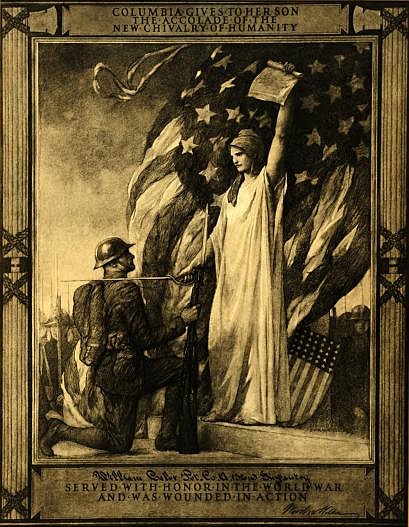Chattanooga's plan to create a memorial to the lives lost in The Great War had community support and, when additional bonds were necessary for design and construction, political and civic leaders fanned out across the city, advocating for a Soldiers and Sailors Memorial Auditorium. The election resulted in a decisive majority for the additional bonds, and the auditorium commission concluded that they could move forward.
The design process was thorough, with R.H. Hunt consulting with experts in acoustics, stage design and equipment, plus the decorative arts with attention to the design and scenery features necessary for staging "world class" grand opera. Critical was the installation of a grand organ. Once the construction design was finalized, Bender, Beckham and Crox was awarded the contract for excavation work. The auditorium commission began planning for a formal "breaking of the ground" ceremony on Jan. 18, 1922. The general construction contract was awarded to Parks and Company in May and, simultaneously, Fred Cantrell and Company was designated as the official heating, lighting and plumbing contractor. By Nov. 11, 1922, the fourth anniversary of the signing of the armistice which ended the Great War, the city and its citizens were ready to celebrate the "laying of the cornerstone."
Businesses across the city closed, and people assembled in the Tivoli Theatre, then the city's largest auditorium, for the preliminary program. It had been designed as a day to be remembered "throughout the ages" as a commemoration of the Great War and the Allied victory. Citizens entered the theater to a medley of "War Songs," provided by the Tivoli Orchestra and, once order was created, the audience stood and sang one verse of "America," led by Dick Park. The opening prayer was offered by Dr. E.R. Jones, chaplain, Davis King Summers American Legion Post 14. Post 14 Commander Alex Guerry spoke about the significance of "Armistice Day," the Kiwanis Quartette performed Great War songs and the Sixth Cavalry bugler issued the "the Massing of Colors."
As each Allied nation's flag was brought down the aisle by members of the Women's Auxiliary of the American Legion, a soloist offered that nation's national anthem. The English national anthem was sung by Dick Park while Mrs. Harry Clark and Miss Eleanor Lasley presented the flag. Mrs. V.B. Prater intoned the Belgian national anthem as Mrs. Tom McCallie and Miss Kathleen Gager marched in with the Belgian flag. The Italian national anthem was sung by Walter Heasty, with flag displayed by Miss Myra Herron and Mrs. Edwin McMillin, immediately followed by "La Marseillaise" by Miss Eloise Baylor, with the French flag promenaded by Miss Marjorie Newell and Miss Marian Erwin.
The final number resulted in the crowd rising to its feet with thunderous applause as Mrs. W.H. Pryor led the citizens in the "Star-Spangled Banner" as Mrs. R. Gwin Brock marched to the center of the stage with the flag of the United States. The flag presentations concluded with the unfurling of the American Legion flag, carried by Mrs. Frank Rice. Mayor A.W. Chambliss called for a moment of silence in recognition of the dead and then paid tribute to the Gold Star Mothers seated in the center front. Bishop Thomas F. Gailor spoke about the never-ending debt owed by those who were recipients of freedom, noting the required balance of personal rights and responsibilities. He called for two moments of total silence, followed by the sounding of "Taps" at exactly 11:50 a.m. The sounds of sobbing filled the Tivoli as the benediction was offered by Past National Chaplain of the American Legion Dr. John W. Inzer.
At two minutes to noon, a cannon on Cameron Hill boomed, followed by the synchronized blowing of every factory whistle in Chattanooga. At noon, all traffic stopped and citizens paused wherever they were for two minutes of silent tribute to those who had given their lives in the Great War. During those two minutes of silence, "Taps" was again blown by 10 trumpeters stationed on the roof of the Volunteer State Life Building, followed by seven volleys fired by an entire troop of cavalry from the top of the same building. The audience at the Tivoli gasped when the curtain raised to the tableau of "Columbia Knighting the Wounded Soldier," with a Gold Star Mother participating in the tableau along with one of Chattanooga's highly decorated Great War soldiers.
And the ceremony had only just begun.
Linda Moss Mines, the Chattanooga-Hamilton County historian, is secretary of the Chattanooga Area Veterans Council and the regent, Chief John Ross Chapter, NSDAR.
